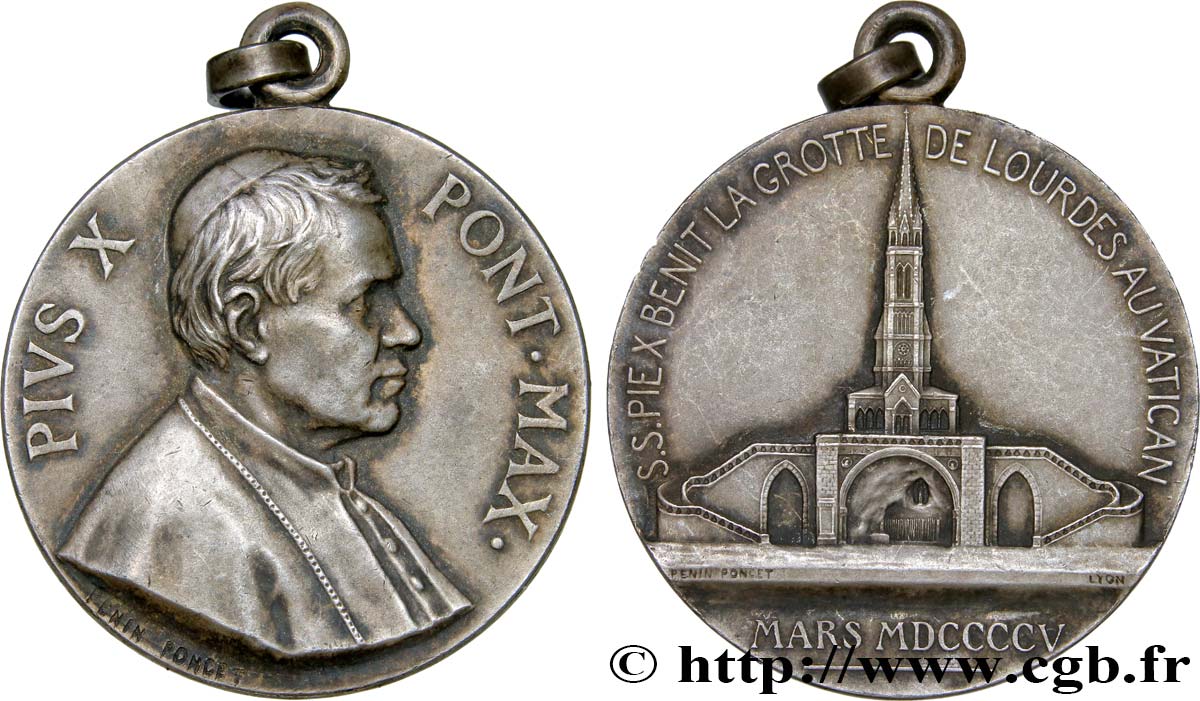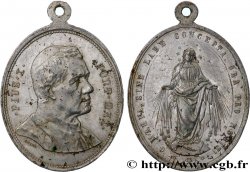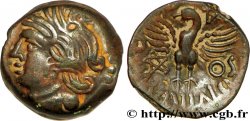E-auction 286-206685 - fme_438608 - VATICAN - PIUS X (Giuseppe Melchiorre Sarto) Médaille, Pie X, Grotte de Lourdes
You must signin and be an approved bidder to bid, LOGIN TO BID. Accounts are subject to approval and the approval process takes place within 48 hours. Do not wait until the day a sale closes to register. Clicking on « bid » constitutes acceptance of the terms of use of cgb.fr private e-auctions.
Bids must be placed in whole Euro amounts only. The sale will start closing at the time stated on the item description; any bids received at the site after the closing time will not be executed. Transmission times may vary and bids could be rejected if you wait until the last second. For further information ckeck the E-auctions F.A.Q.
NO BUYER'S FEE.
NO BUYER'S FEE.
| Estimate : | 90 € |
| Price : | 17 € |
| Maximum bid : | 17 € |
| End of the sale : | 08 October 2018 18:39:30 |
| bidders : | 4 bidders |
Type : Médaille, Pie X, Grotte de Lourdes
Date: 1905
Mint name / Town : 65 - Lourdes
Metal : white metal
Diameter : 30 mm
Orientation dies : 12 h.
Engraver PONCET Alexandre,
Maison PENIN PONCET
Weight : 11,80 g.
Edge : lisse
Puncheon : sans poinçon
Coments on the condition:
Médaille en très bel état avec une patine grise hétérogène
Obverse
Obverse legend : PIVS X - PONT. MAX..
Obverse description : Buste à droite du pape Pie X, signé : PENIN PONCET..
Reverse
Reverse legend : S. S. PIE X BENIT LA GROTTE - DE LOURDES AU VATICAN // À L’EXERGUE : MARS MDCCCCV.
Reverse description : Vue de la grotte de Lourdes. signé : PENIN PONCET - LYON.
Commentary
Selon l’article de Jean-Pol Donné dans le Bulletin Municipal Officiel de Lyon, « Les Pénin, 170 ans de médailles (1ère partie et deuxième partie)», Ludovic Penin (1830-1868), fils de Marius Penin (1807-1880) et élève de Vibert et Fabisch à l’Ecole des Beaux-Arts de Lyon composera surtout des médailles religieuses et obtiendra d’ailleurs le titre de « graveur pontifical » en 1864. En 1867, Ludovic Penin décide l’acquisition de l’atelier d’estampage de boutons métalliques Mouterde-Billion à Monchat afin de fabriquer les médailles qu’il grave et édite. Ainsi est née la Maison Penin qui a poursuivi son activité sur le même site jusqu’au début du XXIe.
Mais en février 1868, la mort de Ludovic Penin, à l’âge de 38 ans, met en péril cette entreprise. Sur la recommandation de son ami Fabisch, Marius, revenu à Lyon, forma un jeune sculpteur : Alexandre Poncet. En deux ans, Poncet réussit à maîtriser la technique de la gravure en médailles. Dès lors, il se partage entre ses créations propres et la diffusion des médailles issues des poinçons laissés par Marius et Ludovic Penin. La Maison Penin, devenue Penin-Poncet après le mariage d’Alexandre Poncet avec la fille de Ludovic Penin, connait alors une grande prospérité favorisée par l’abandon du privilège de la Monnaie de Paris en 1893..
According to the article by Jean-Pol Donné in the Official Municipal Bulletin of Lyon, \\\"The Pénins, 170 years of medals (part 1 and part 2)\\\", Ludovic Penin (1830-1868), son of Marius Penin (1807-1880) and student of Vibert and Fabisch at the Ecole des Beaux-Arts in Lyon, mainly composed religious medals and obtained the title of \\\"pontifical engraver\\\" in 1864.. In 1867, Ludovic Penin decided to acquire the Mouterde-Billion metal button stamping workshop in Monchat in order to manufacture the medals that he engraved and published.. This is how Maison Penin was born, which continued its activity on the same site until the beginning of the 21st century..
But in February 1868, the death of Ludovic Penin, at the age of 38, jeopardized this enterprise.. On the recommendation of his friend Fabisch, Marius, having returned to Lyon, trained a young sculptor: Alexandre Poncet. In two years, Poncet succeeded in mastering the technique of medal engraving.. From then on, he divided his time between his own creations and the distribution of medals from the hallmarks left by Marius and Ludovic Penin.. The Maison Penin, which became Penin-Poncet after the marriage of Alexandre Poncet to the daughter of Ludovic Penin, then enjoyed great prosperity, encouraged by the abandonment of the privilege of the Paris Mint in 1893..
Mais en février 1868, la mort de Ludovic Penin, à l’âge de 38 ans, met en péril cette entreprise. Sur la recommandation de son ami Fabisch, Marius, revenu à Lyon, forma un jeune sculpteur : Alexandre Poncet. En deux ans, Poncet réussit à maîtriser la technique de la gravure en médailles. Dès lors, il se partage entre ses créations propres et la diffusion des médailles issues des poinçons laissés par Marius et Ludovic Penin. La Maison Penin, devenue Penin-Poncet après le mariage d’Alexandre Poncet avec la fille de Ludovic Penin, connait alors une grande prospérité favorisée par l’abandon du privilège de la Monnaie de Paris en 1893..
According to the article by Jean-Pol Donné in the Official Municipal Bulletin of Lyon, \\\"The Pénins, 170 years of medals (part 1 and part 2)\\\", Ludovic Penin (1830-1868), son of Marius Penin (1807-1880) and student of Vibert and Fabisch at the Ecole des Beaux-Arts in Lyon, mainly composed religious medals and obtained the title of \\\"pontifical engraver\\\" in 1864.. In 1867, Ludovic Penin decided to acquire the Mouterde-Billion metal button stamping workshop in Monchat in order to manufacture the medals that he engraved and published.. This is how Maison Penin was born, which continued its activity on the same site until the beginning of the 21st century..
But in February 1868, the death of Ludovic Penin, at the age of 38, jeopardized this enterprise.. On the recommendation of his friend Fabisch, Marius, having returned to Lyon, trained a young sculptor: Alexandre Poncet. In two years, Poncet succeeded in mastering the technique of medal engraving.. From then on, he divided his time between his own creations and the distribution of medals from the hallmarks left by Marius and Ludovic Penin.. The Maison Penin, which became Penin-Poncet after the marriage of Alexandre Poncet to the daughter of Ludovic Penin, then enjoyed great prosperity, encouraged by the abandonment of the privilege of the Paris Mint in 1893..








 Report a mistake
Report a mistake Print the page
Print the page Share my selection
Share my selection Ask a question
Ask a question Consign / sell
Consign / sell
 Full data
Full data











